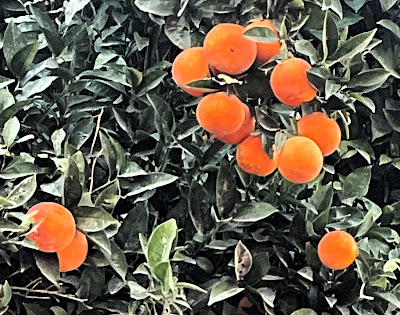Mount Angel Abbey church with the bell-tower
Continuing
from my Journals, I go back today to 2003.......
Priests Retreat – a week after Easter, it is the custom
for all the priests to gather for their annual retreat. It is a good
opportunity for camaraderie among us, also to get to know each other a little
better. There is another opportunity which the Baker Diocese has for priests to
get together, besides of course the Chrism Mass, and that is the annual Clergy
Assembly, which is held during the second week of October, a week of learning,
updates, and refreshing our minds and hearts on various topics relating to our
pastoral work, preaching and life in general. This was my first Retreat, which
is held every year at Mount Angel Seminary, which is closer to Portland, near
Salem on the west side of Oregon, situated in the Portland Diocese, the other
diocese in the state, much bigger in population, but much smaller in size. I
can say that our Baker Diocese has two-thirds of the
state of Oregon, while the Portland diocese has the other third. But the
bulk of the population is on the west side, with the big cities of Portland,
Salem, Eugene, and further south, Medford and Grants Pass. Mount
Angel Abbey is run by Benedictine
monks, and serves also as the Diocese of Washington State, Idaho, Alaska,
Arizona, the Dakotas, Hawaii, the Samoan Islands, and the island of Guam, which
is a US territory. At that time, in 2003, they had 80 monks at the Abbey, a
minor Seminary of around 16 students, and a College or Seminary of about 80
students. Mount Angel accepts also a variety of religious order priests, and I
saw a handful of Carmelites as well as Dominicans, other than the Diocesan,
which make up the majority. Mount
Angel Abbey is a community of Benedictine monks established in 1882 from the Abbey of Engelberg in
Switzerland. The abbey, located on the top of Mount Angel, a 485-foot high butte, has its own post office separate from the
city of Mt. Angel's, Saint Benedict. The Seminary's main church
has a tower that contains the largest free-swinging bells on the west coast.
I was highly
impressed by the Library, which was designed by Finnish architect Alvar Aalto
between 1967 and 1970. And while visiting this immense library I was just as
impressed by the amazing display of religious magazines and Catholic newspapers
from around the world, besides of course thousands of books on everything from
Scripture, Theology, Liturgy and everything related to Catholicism and
spirituality. Since the Abbey is situated on a hill, one
can get a good clear glimpse of the surrounding areas, including a perfect view
of Mount Hood. It is said that that is the only place in the whole USA where
you can get snow-skiing all year round. The sun rose exactly at the foothills
of Mount Hood, and seeing the trees and fields underneath us throwing all kinds
of shadows and reflections was quite awesome, especially with the low clouds
stuffing themselves in the valleys, which made me seem like I was above the
clouds, which I actually was. There are all kinds of statues around the lush
property, with a very ornate Abbey chapel, and another chapel underneath where
the students usually meet, and which is called the crypt. The monks normally meet
at the main church, and we were invited to join them on a Wednesday afternoon
for vespers. Then we were invited into their refectory, where they prepared for
us drinks and cocktails, as well as a sumptuous meal, complete with Filet
Mignon and Salmon, and veggies, other than an endless selection of pies and
cakes. I asked one of the novices if this is the way they eat daily, and he
kept shaking his head for two minutes, emphasizing “No, No, definitely No.” But
they eat pretty good, no doubt about it. They had two Swiss
chefs who were hired after they got tired of cooking in Restaurants, and wanted
a change in their clientele. It was like eating in a first class Hotel, and it
was a fitting tribute the Abbott gave to the priests of the Baker Diocese, including
our two Bishops, Bishop Vasa and Bishop Thomas Connolly the bishop
Emeritus of the Baker Diocese, who still joined us in most communal events and
functions. As usual, wherever I go, I always find someone pressingly and
enthusiastically interested in Malta, and I ended up with the Liturgy and
Sacred Art Professor all evening, answering all kinds of questions about the
history of Malta. I had no doubt that by the evening he was begging the Abbot
to let him visit Malta. Since he also happens to be the Sub-Prior, third in
command, he may have an advantage over the other monks.































